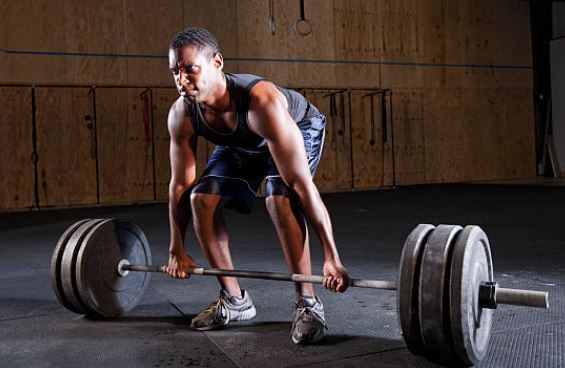
The deadlift is a major weight training exercise that benefits various muscle groups throughout the body including your hamstrings, butt, and back.
It is one of the three primary exercises in any strength training plan besides barbell squat and the bench press.
However, anyone new to the deadlift can be prone to injury, which is why it is crucial to understand the ins and outs of the exercise.
While deadlift is a wonderful full body exercise to perform, if not done correctly, it can cause serious damage to different parts of the body, especially the back.
That said, here’s a guide to performing a deadlift without sustaining injury!
Focus on your position
While performing a deadlift, maintaining the right posture is of utmost importance.
When you approach the barbell, make sure that it is not placed too far away. If you start with your barbell too distant from you, you may risk compromising your pull. That said, stand with your feet under the bar and your shins about an inch away from it.
Step two involves hinging at the hips to bend down and grabbing the barbell. Do not bend or push forward your knees at all. Place your hands on the barbell slightly wider than shoulder-width and with an overhand grip.
Now that you have grabbed the barbell and are ready to lift it, you can now bend your knees forward and lower your hips until your shins touch the bar.
You’ll now find that your back is slightly arched, which is why you need to straighten it to make sure that your entire body has the strength and the stability to pull the bar up. Ensure that your neck is also in a straight position.
Finally, you are ready to lift. Push upwards and see that the barbell is touching your legs the entire time through the duration of the lift. When you’re at the top of the lift, push your hips forward towards the barbell and squeeze your glutes and chest muscles.
Hold and slowly lower the barbell down in the same reverse motion.
Balance your push and pull move
You may think that deadlifting is all about pulling, since it involves exerting force towards our body, thereby using our muscles to pull the bar off the floor. But experts advise focusing on the push move as well.
Lifting the barbell may engage your hips to pull the weights upward. However, you also have to put force in the ground through your feet to push the floor away.
When is the perfect time to finish your lift?
Many who want to reap maximum benefits from a deadlift often overextend their hips at the top of the lift, in the hope that it will give them a better range of motion and increased flexibility, which according to experts can lead to other damages.
That said, the best time to finish your lift is when you’re completely upright, your knees are locked and your glutes engaged. Beyond that, one must not try to stretch.
Since now you know how to perform a deadlift correctly, here are some deadlift variations to try.
1. Romanian deadlift
The Romanian deadlift (RDL) is one of the variations of deadlift that builds and improves strength around the posterior chain muscles, which includes the erector spinae, gluteus maximus, hamstrings and adductors. If performed correctly, it can engage your core and can tone and target your lower body.
2. Sumo deadlift
A sumo deadlift is a great way to build muscle mass. It helps strengthen the quads, glutes, hamstrings, and other muscles of the posterior chain. Besides, it is also one of the exercises performed as a rehabilitation routine for those who have sustained back injuries.
3. Dumbbell deadlift
If you’re looking to engage all the core muscles and increase muscle mass at the same time, dumbbell deadlifts are your go-to exercise. It also helps boost grip strength and improves posture and stability. What’s even better about it is that it is a great way to begin your experience with deadlifts.

